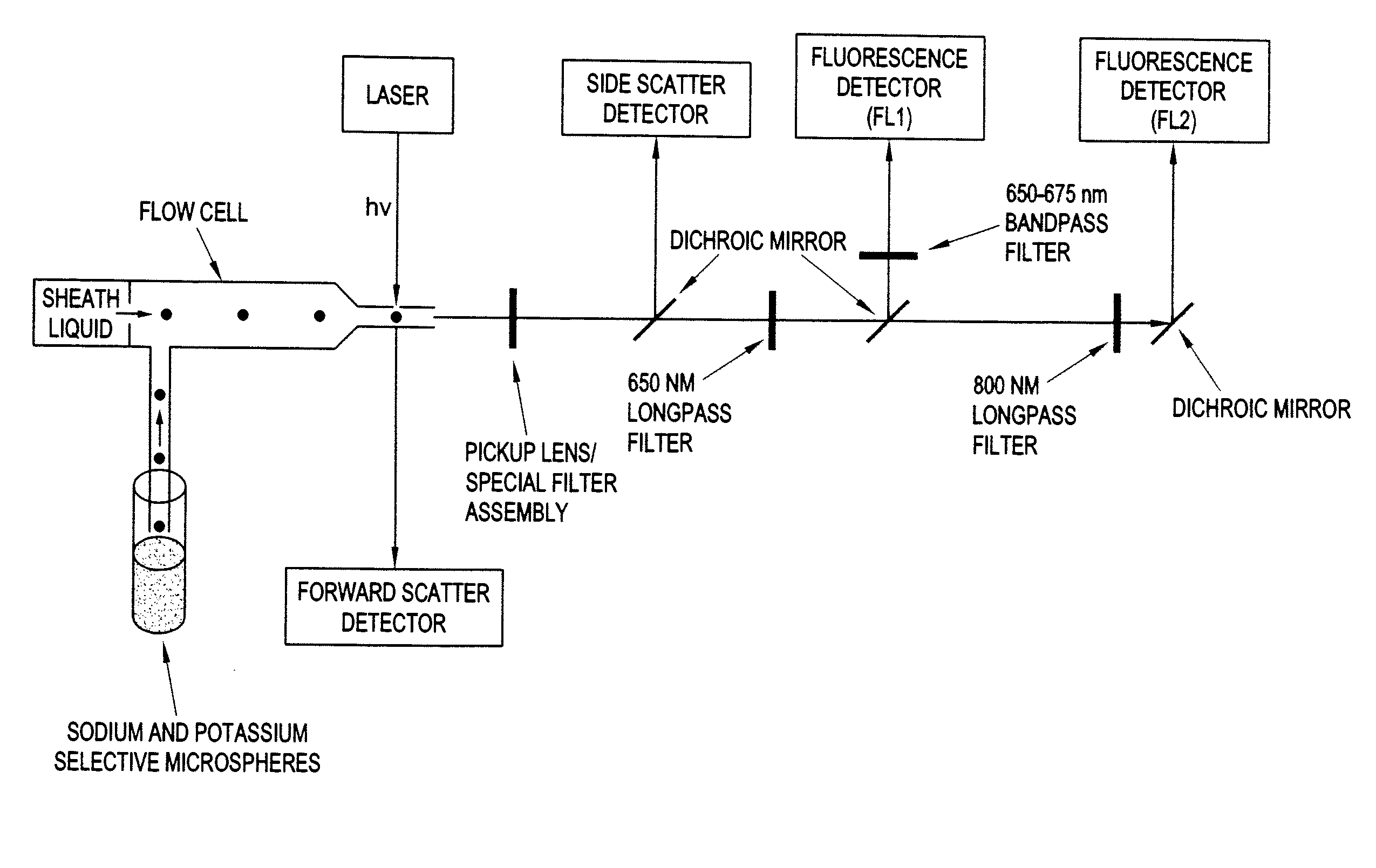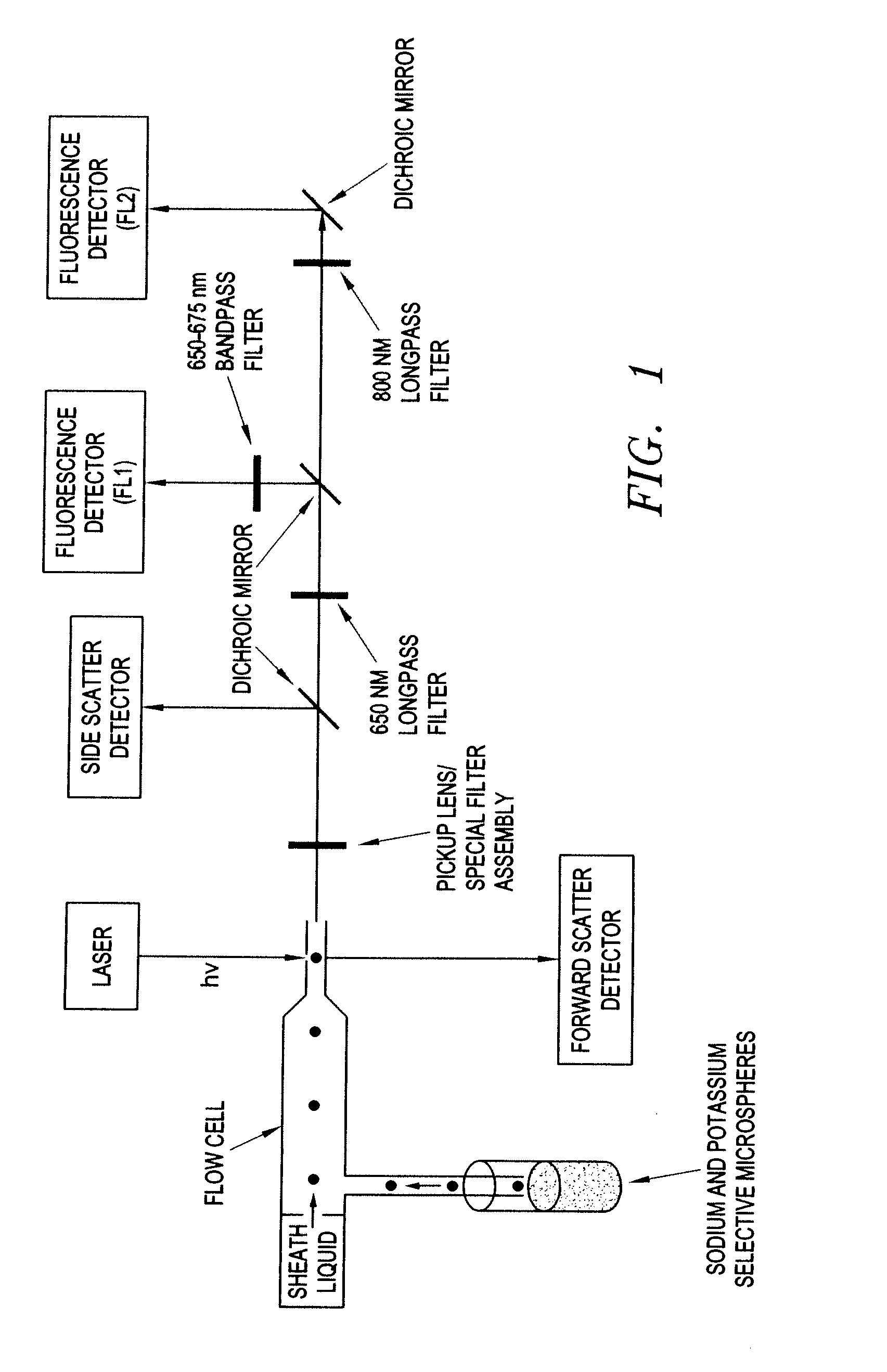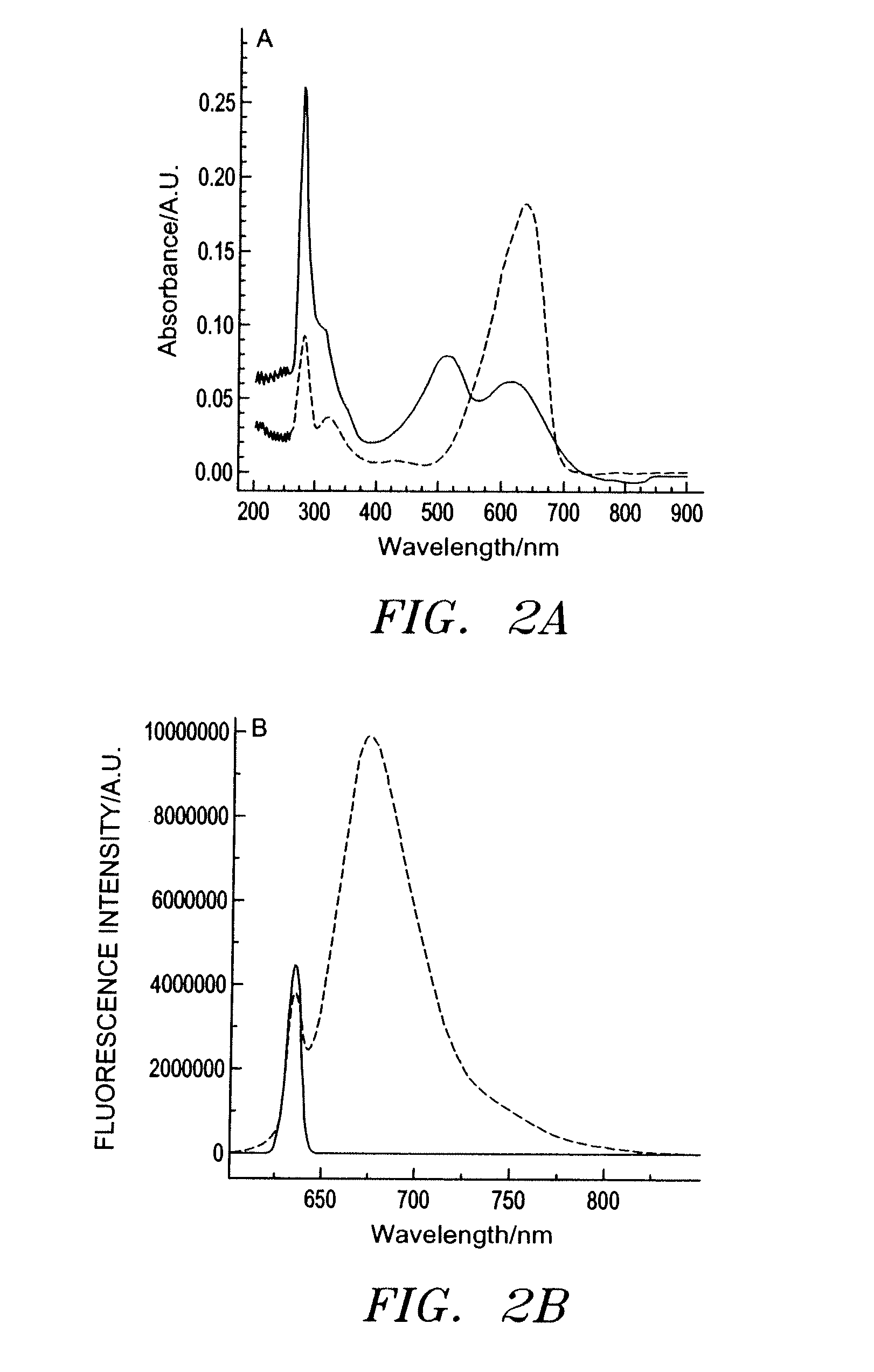Ion-detecting microspheres and methods of use thereof
a technology of ion-detecting microspheres and microspheres, which is applied in chemical methods analysis, instruments, material analysis, etc., can solve the problems of large sample volumes, high sensing volume of optode films, and long response times (many hours), and achieve high-throughput analysis of samples, high detection efficiency, and high detection efficiency.
- Summary
- Abstract
- Description
- Claims
- Application Information
AI Technical Summary
Benefits of technology
Problems solved by technology
Method used
Image
Examples
example 1
Preparation of Ion-Detecting Microspheres
[0088]A polymer cocktail containing PVC, DOS, ionophore, ETH 5294 and NaTFPB was dissolved in 5 mL of cyclohexanone and diluted with 100 mL of dichloromethane. The addition of 1 mL of xylenes to the solution aided in the aesthetic appearance of the cast particles. Potassium sensing microspheres contained PVC (33 wt %), DOS (66 wt %), ETH 5294 (0.2 mmol / kg), NaTFPB (0.3 mmol / kg), and the potassium ionophore BME-44 (21.1 mmol / kg). Sodium sensing microspheres contained PVC (33 wt %), DOS (66 wt %), ETH 5294 (0.2 mmol / kg), and either sodium ion-ionophore X (10.0 mmol / kg) and NaTFPB (0.3 mmol / kg) (type 1) or sodium ion-ionophore (89.3 mmol / kg) and NaTFPB (27.1 mmol / kg) (type 2). For segregation of particle subsets in the parallel analyses, type 1 sodium sensing particles also contained RLC reference dye (3.9×10−3 mmol / kg). Particles were prepared using a particle casting apparatus as described by Tsagkatakis et al. (16).
[0089]The following setting...
example 2
[0090]Instrumentation and Measurement
[0091]The absorption behavior of ETH 5294 in both its protonated and deprotonated forms was determined using a DU 70 spectrophotometer (Beckman Coulter, Inc., Fullerton, Calif.). For fluorescence characterization, a 1×10−5 M solution of ETH 5294 in DMSO was mixed with a 1% (v / v) aqueous solution of either HCl or NaOH and excited at 635 nm using a Fluorolog 3 fluorometer (Instruments SA, Edison, N.J.) to determine the emission behavior of the protonated and deprotonated forms at this wavelength. Optical characterization of RLC in methanol found λex=820 nm and λem=860 nm.
[0092]A Beckman Coulter EPICS XL flow cytometer modified for both 635-nm and 785-nm excitation was used to interrogate the sensing microspheres. A 650-nm long-pass emission filter and a 660 (±15) nm band-pass filter were used to collect fluorescence emitted between 650 and 675 nm, and an 800-nm long-pass emission filter was used to collect fluorescence emitted above 800 nm. A schem...
example 3
Preparation of Lead Ion-Detecting Microspheres
[0093]The schematic set-up and the general protocol for the preparation of sensing particles have been reported recently (17) and it applies here with minor modifications. Unless otherwise indicated a cocktail mixture was prepared by weighing out 58.5 mg PVC, 116 mg DOS, 1.44 mg (10.2 mmol / kg) chromoionophore, 1.27 mg (6.9 mmol / kg) reference dye DiIC18, 4.05 mg (23.8 mmol / kg) ion exchanger NaTFPB, 14.8 mg (87.2 mmol / kg) ionophore and dissolving it in 5 mL of cyclohexanone. The mixture was shaken in a vortex mixer for approximately one hour and then added dropwise to 100 mL dichloromethane under gentle stirring. After adding 1 mL xylenes the solution was filtered through a 0.45 μm Gelman filter and 50 mL transferred to a gas-tight Hamilton syringe. The syringe containing the polymer core solution was mounted on a syringe pump (Stoelting, Wood Date, Ill.) and set to flow at a rate of 0.263 mL min−1. Deionized water used as the sheath liqui...
PUM
| Property | Measurement | Unit |
|---|---|---|
| diameter | aaaaa | aaaaa |
| diameter | aaaaa | aaaaa |
| diameter | aaaaa | aaaaa |
Abstract
Description
Claims
Application Information
 Login to View More
Login to View More - R&D
- Intellectual Property
- Life Sciences
- Materials
- Tech Scout
- Unparalleled Data Quality
- Higher Quality Content
- 60% Fewer Hallucinations
Browse by: Latest US Patents, China's latest patents, Technical Efficacy Thesaurus, Application Domain, Technology Topic, Popular Technical Reports.
© 2025 PatSnap. All rights reserved.Legal|Privacy policy|Modern Slavery Act Transparency Statement|Sitemap|About US| Contact US: help@patsnap.com



